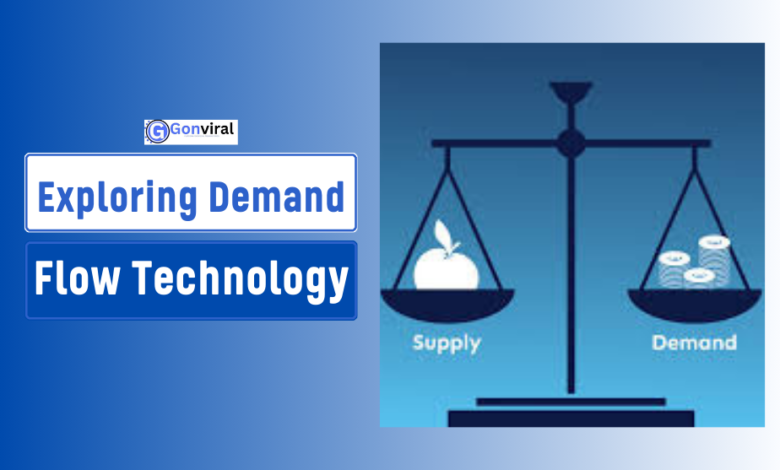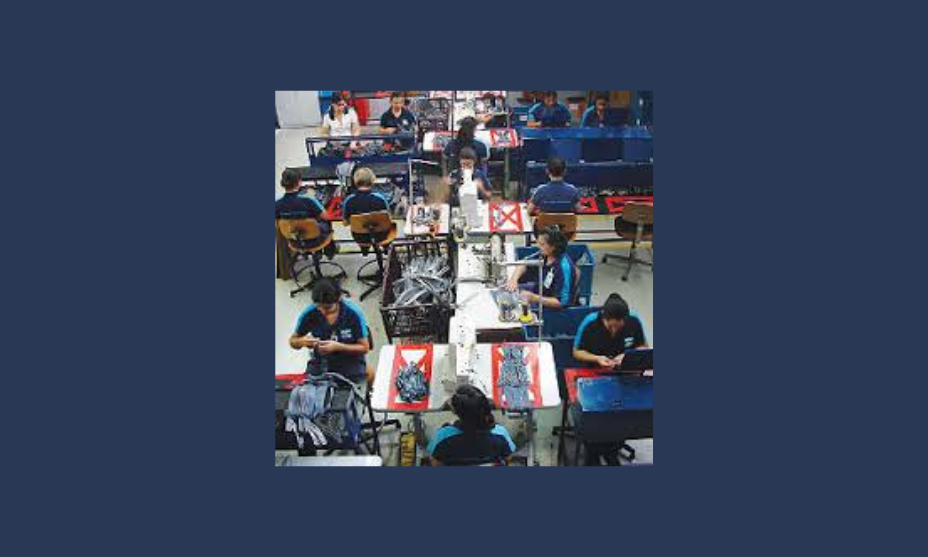Exploring Demand Flow Technology: The Future of Inventory Management

Introduction
Exploring Demand Flow Technology, In today’s fast-paced business environment, effective inventory management is crucial for maintaining competitiveness and meeting customer demands. One of the most promising advancements in this field is Demand Flow Technology (DFT). But what is demand flow technology, and how can it revolutionize inventory management? This article will delve into the details of DFT, its benefits, challenges, and the future it holds for supply chain management.
Demand Flow Technology
Definition and Overview of DFT
Demand Flow Technology (DFT) is a manufacturing and production strategy designed to optimize the flow of materials and information based on real-time customer demand. It aims to improve efficiency, reduce waste, and enhance responsiveness in the supply chain. Here’s a more detailed explanation:
Key Concepts of Demand Flow Technology
- Customer-Centric Approach:
- DFT is built around understanding and responding to customer demand. Production schedules and inventory levels are adjusted based on actual orders rather than forecasts.
- Real-Time Data Utilization:
- It leverages real-time data analytics to monitor customer orders and inventory levels. This allows companies to react quickly to changes in demand.
- Flow-Based Production:
- Unlike traditional manufacturing, which often operates on batch production and forecasts, DFT promotes continuous flow. This means products are produced only as needed, reducing excess inventory and minimizing waste.
- Value Stream Mapping:
- DFT often employs value stream mapping to identify and eliminate non-value-added activities. This process helps streamline operations and enhance productivity.
- Collaboration Across Departments:
- DFT encourages collaboration between different departments (like sales, production, and supply chain) to ensure that all parts of the organization are aligned with customer demand.
- Flexible Manufacturing Systems:
- The technology supports flexible manufacturing systems that can quickly adjust to varying production volumes and product types, facilitating a more agile production environment.
Benefits of Demand Flow Technology
- Increased Efficiency: By focusing on actual demand, companies can optimize their production processes and reduce lead times.
- Reduced Inventory Costs: DFT minimizes excess inventory by producing only what is needed, resulting in lower holding costs.
- Improved Customer Satisfaction: Faster response times and the ability to meet customer demands more accurately lead to higher satisfaction levels.
- Enhanced Resource Utilization: Resources are allocated more effectively, ensuring that production capabilities match customer needs.
Applications
Demand Flow Technology is applicable across various industries, including manufacturing, retail, and logistics. It is particularly useful in environments where customer demand is volatile and where rapid response is critical.
In summary, Demand Flow Technology focuses on aligning production with actual market demand, improving operational efficiency, and enhancing customer satisfaction through a data-driven, responsive manufacturing process.
Why is DFT Important?
Boosts Efficiency
DFT significantly enhances production efficiency by eliminating unnecessary steps and waste in the manufacturing process. By integrating testing considerations into the design phase, every action taken during production is purposeful and efficient.
This streamlining is akin to a factory operating like a well-oiled machine, where each component works harmoniously to produce high-quality products without redundancy. As a result, the production line becomes faster and more responsive to changes in demand.
Saves Money
Implementing DFT allows companies to align their production schedules closely with actual customer demand, effectively reducing excess inventory and storage costs. By avoiding overproduction and minimizing unsold goods, businesses can allocate resources more efficiently. This financial prudence leads to significant cost savings, as companies no longer have to invest in storing products that may not sell, thus improving their overall profitability.
Improves Customer Satisfaction
DFT contributes to improved customer satisfaction by ensuring that products are available when customers want them. With reduced production times and enhanced responsiveness to market demands, businesses can deliver goods more quickly and reliably.
Satisfied customers are more likely to return for future purchases and recommend the company to others, leading to increased sales and a stronger market presence. Ultimately, faster production and timely deliveries create a positive feedback loop that fosters long-term customer loyalty.
How Does DFT Work?
Demand Flow Technology (DFT) is a production methodology that focuses on optimizing manufacturing processes to enhance efficiency and responsiveness to customer demands. Here’s a breakdown of its core principles:
Flow Management
- Mapping the Production Process: DFT emphasizes the importance of visualizing the entire production workflow. By creating a comprehensive map, manufacturers can identify bottlenecks—points where delays occur or resources are underutilized.
- Eliminating Bottlenecks: Once bottlenecks are identified, the goal is to streamline processes to ensure a smooth, continuous flow of production. This might involve re-arranging workflows, redistributing tasks, or reallocating resources to maintain efficiency and minimize downtime.
Demand Pull
- Pull System vs. Push System: Unlike traditional manufacturing, which often relies on forecasts to dictate production schedules (push system), DFT uses a demand-driven approach. In this pull system, production is triggered by actual customer demand rather than predictions.
- Reducing Overproduction: By aligning production closely with customer needs, DFT minimizes the risk of overproduction and excess inventory. This not only saves costs but also allows manufacturers to respond more swiftly to market changes.
Flexibility and Adaptability
- Adapting to Changes: DFT requires a production setup that is flexible enough to accommodate fluctuations in demand. This could involve creating smaller, more frequent production runs instead of large, batch-based runs.
- Quick Changeovers: To maintain responsiveness, DFT encourages quick changeover practices, allowing machinery to switch between different products with minimal downtime. This enhances the ability to meet varied customer demands efficiently.
- Versatile Machinery: Utilizing machinery that can handle multiple types of production tasks can further increase flexibility, allowing manufacturers to adapt their output based on real-time feedback from the market.
Historical Context and Evolution
The evolution of Demand Flow Technology can be traced back to principles of Lean Manufacturing and Just-In-Time (JIT) production. As businesses sought to eliminate inefficiencies and respond more dynamically to market demands, DFT emerged as a solution that integrates real-time data analysis with effective inventory practices.
Key Components of Demand Flow Technology
Real-Time Data Analysis
At the heart of DFT is the ability to analyze data in real time. This allows businesses to track customer demand accurately and adjust inventory levels accordingly. The integration of advanced software solutions enables companies to collect and analyze data efficiently, leading to informed decision-making.
Customer Demand Tracking
Understanding customer demand is essential for effective inventory management. DFT utilizes various tools and techniques to track what customers are purchasing, allowing businesses to respond promptly and appropriately.
Technology Integration
The effectiveness of Demand Flow Technology heavily relies on technology integration. Businesses often implement specialized software solutions that facilitate inventory replenishment strategies and provide insights into trends and patterns in demand. This integration is crucial for streamlining operations and optimizing inventory levels.
Challenges and Considerations
Transitioning from Traditional Methods to DFT
Shifting from traditional inventory management methods to DFT can pose challenges. Companies must carefully plan this transition to minimize disruptions.
Technological Hurdles and Training Needs
Implementing DFT requires investments in technology and training for staff. Ensuring that team members are well-equipped to use new tools is crucial for successful adoption.
Balancing Demand Variability and Supply Chain Stability
While DFT allows for flexibility in responding to customer demand, it can also lead to challenges in maintaining supply chain stability. Businesses must find a balance between agility and reliability to ensure consistent service.
Real-World Applications and Case Studies
Examples of Companies Successfully Using DFT
Several companies have successfully implemented Demand Flow Technology, resulting in significant improvements in their inventory management practices. For instance, a leading retail chain utilized DFT to enhance its supply chain responsiveness, resulting in reduced stockouts and increased customer satisfaction.
Comparative Analysis with Traditional Inventory Methods
Comparing DFT with traditional inventory management methods highlights its effectiveness. Companies using DFT often experience higher inventory accuracy and efficiency compared to those relying solely on forecasting models.
The Future of Demand Flow Technology
Emerging Trends and Technologies
The future of Demand Flow Technology is promising, with emerging trends such as artificial intelligence (AI) and the Internet of Things (IoT) playing significant roles. These technologies will enhance demand forecasting techniques and enable more agile supply chains.
Predictions for Inventory Management Practices in the Next Decade
In the next decade, we can expect inventory management practices to become increasingly sophisticated, leveraging real-time data and advanced analytics to drive decision-making.
Best Practices for Implementing Demand Flow Technology
Steps for Successful Implementation
- Conduct a Thorough Analysis: Evaluate current inventory practices and identify areas for improvement.
- Invest in Technology: Choose the right software solutions that align with DFT principles.
- Train Staff: Ensure employees are equipped with the knowledge and skills needed to implement DFT effectively.
- Monitor and Adjust: Continuously monitor performance metrics and make necessary adjustments to improve processes.
Key Metrics to Measure Effectiveness
To assess the effectiveness of DFT, businesses should focus on key metrics such as inventory turnover rate, lead time reduction, and customer satisfaction levels. Exploring Demand Flow Technology These metrics provide valuable insights into the impact of DFT on overall performance.
In-Depth Insights on Demand Flow Technology and Its Future Impact
Understanding the Demand-Driven Approach
Demand Flow Technology fundamentally shifts the focus from traditional forecasting to a demand-driven approach. This means that businesses base their inventory levels on actual customer purchases rather than predicted sales. This transition can significantly improve inventory accuracy, leading to better decision-making and enhanced operational efficiency.
Key Innovations Shaping Demand Flow Technology
- Artificial Intelligence (AI): AI plays a pivotal role in enhancing DFT by providing predictive analytics that help businesses understand future demand patterns. AI algorithms can analyze vast amounts of data to identify trends and make accurate forecasts, allowing for proactive inventory management.
- Internet of Things (IoT): IoT devices can monitor inventory levels in real time. Sensors can track stock levels, provide alerts when items are running low, and help streamline the replenishment process. This connectivity ensures that businesses have visibility over their inventory at all times, reducing the likelihood of stockouts or excess inventory.
- Blockchain Technology: Blockchain can enhance transparency in the supply chain, allowing businesses to track the movement of goods from suppliers to consumers. This level of transparency helps in verifying the authenticity of products and can lead to greater consumer trust.
The Role of Advanced Analytics
Real-time data analysis is vital for DFT, and advanced analytics tools can provide deeper insights into customer behavior. By leveraging big data, businesses can analyze not just what products are selling, but also why they are selling. This understanding allows for more effective inventory replenishment strategies and marketing initiatives.
Future Trends in Demand Flow Technology
- Greater Personalization: As data collection becomes more sophisticated, businesses will be able to tailor their inventory strategies to individual customer preferences. This level of personalization can enhance customer experiences and foster loyalty.
- Increased Automation: The future will see a greater emphasis on automation in inventory management. Automated systems can reduce human error and increase efficiency in tracking inventory levels and reordering products.
- Sustainability Focus: With the increasing importance of sustainability, demand flow technology can help companies optimize their inventory in ways that reduce waste. Businesses can adopt strategies that minimize excess inventory and align more closely with customer demand, leading to a more sustainable supply chain.
Challenges Ahead for Demand Flow Technology
While the benefits of DFT are substantial, companies may face challenges as they integrate new technologies into their existing systems. Some of these challenges include:
- Integration with Legacy Systems: Many businesses still rely on outdated systems for inventory management. Transitioning to a demand flow model may require significant upgrades or complete overhauls of these systems.
- Data Privacy Concerns: As companies collect more data on customer preferences and behaviors, they must navigate the complexities of data privacy regulations. Ensuring compliance while leveraging data for DFT can be challenging.
- Skill Gaps: Implementing DFT requires a workforce skilled in data analytics and technology. Companies may need to invest in training or hiring to bridge these skill gaps.
The Path Forward: Best Practices for Embracing Demand Flow Technology
- Assess Current Capabilities: Businesses should start by evaluating their current inventory management practices and technological capabilities to identify areas for improvement.
- Develop a Strategic Plan: A clear roadmap for implementing DFT is essential. This plan should outline the necessary steps, timelines, and resources required for a successful transition.
- Foster a Culture of Adaptability: Embracing change is crucial for successful implementation. Organizations should cultivate a culture that encourages innovation and adaptability among employees.
- Engage Stakeholders: Involving key stakeholders throughout the process can ensure buy-in and support for the transition to Demand Flow Technology.
- Monitor and Measure Success: Once DFT is implemented, continuous monitoring of key performance indicators (KPIs) will help businesses understand its impact and make data-driven adjustments as needed.
What distinguishes DFT from conventional manufacturing?
Forecasts are the basis of traditional manufacturing, which might result in surplus inventories. On the other hand, DFT minimizes waste and storage expenses by producing goods based on actual consumer demand.
Which sectors stand to gain from DFT?
Although DFT is widely used in the electronics and automotive sectors, it may be used in any industry where productivity and response to market changes are crucial.
Pros and Cons of Demand Flow Technology
| Pros | Cons |
|---|---|
| 1. Improved Responsiveness | 1. Implementation Complexity |
| DFT enables companies to quickly respond to customer demand changes, leading to increased customer satisfaction. | Setting up DFT can be complex and may require significant changes to existing processes. |
| 2. Reduced Inventory Levels | 2. Initial Costs |
| By aligning production with actual demand, DFT can significantly reduce excess inventory, leading to lower holding costs. | The initial setup and training for DFT can be costly, potentially impacting short-term financials. |
| 3. Enhanced Efficiency | 3. Employee Resistance |
| DFT streamlines processes and can lead to more efficient use of resources, reducing waste and improving productivity. | Employees may resist changes in workflow or processes, leading to potential disruptions. |
| 4. Increased Flexibility | 4. Requires Real-Time Data |
| Organizations can more easily adapt to changes in demand, allowing for more flexible production schedules. | DFT relies heavily on real-time data; inaccurate data can lead to poor decision-making. |
| 5. Better Resource Allocation | 5. Training Requirements |
| Resources can be allocated more effectively, as production aligns more closely with actual demand patterns. | Staff need training to understand and effectively implement DFT principles, which can take time and resources. |
| 6. Reduced Lead Times | 6. Risk of Overproduction |
| DFT can shorten lead times by ensuring that production is closely aligned with demand. | If demand forecasting is inaccurate, there is a risk of overproduction, leading to waste. |
Conclusion
In conclusion, Demand Flow Technology represents a significant advancement in inventory management and supply chain optimization. By focusing on customer demand and leveraging real-time data analysis, businesses can achieve greater efficiency and satisfaction. As the landscape of inventory management continues to evolve, adopting DFT will be crucial for companies looking to stay competitive and meet the demands of the modern market.
FAQs, Exploring Demand Flow Technology
1. What is Demand Flow Technology (DFT)?
Demand Flow Technology (DFT) is a manufacturing and business management methodology that focuses on aligning production with actual customer demand. It aims to reduce inventory levels, improve efficiency, and meet real-time market needs by shifting away from traditional batch production toward more flexible and responsive processes.
2. How does Demand Flow Technology work?
DFT works by using a pull-based system, where production is triggered by customer orders rather than forecasts. This allows companies to produce only what is needed, when it’s needed, reducing excess inventory, waste, and lead times. It integrates tools like takt time analysis, process mapping, and capacity planning to ensure smooth operations.
3. What are the benefits of Demand Flow Technology?
Some of the key benefits of Demand Flow Technology include:
Reduced inventory and carrying costs
Enhanced responsiveness to customer demand
Shorter lead times
Improved production efficiency
Lower operational costs
Greater flexibility in manufacturing processes
4. How is DFT different from Just-in-Time (JIT) manufacturing?
While both DFT and Just-in-Time (JIT) focus on reducing inventory and aligning production with demand, DFT emphasizes a flow-oriented approach that optimizes production line configuration to maintain a steady pace of output. JIT focuses on minimizing waste and producing only what is necessary, but it may not address process flow as directly as DFT.
5. What industries can benefit from Demand Flow Technology?
DFT is particularly beneficial in industries with variable demand, such as electronics, automotive, consumer goods, and other sectors that rely on complex manufacturing processes. It can also be applied in service industries to optimize operational efficiency.









